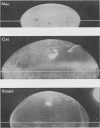Abstract
1. A method for the estimation of the energy released by the anterior part of the lens capsule during accommodation is described. This includes
(i) A determination of the pressure required to distend the capsule by a standard volume.
(ii) The calculation from the photographed lens profiles of the degree of capsular contraction which occurs when the lens changes from the unaccommodated to the accommodated form.
(iii) Capsular volume changes in vitro are then related to the surface area changes calculated for the lens in vivo.
2. A correlation exists between the stored capsular energy per unit area or surface tension and the accommodation power of different species. The human lens capsule releases 1170 ergs/cm2 while the more spherical lenses of the cat and rabbit release 520 and 485 ergs/cm2 respectively for a 10% change in lens diameter. The amount of energy which can be stored depends on the degree of flatness of the lens and the volume of the anterior segment. The flatter the lens and the smaller the volume of the anterior segment, the greater the capsular surface tension.
3. The anterior surface of the human lens remains ellipsoidal throughout life. The changes of accommodation which occur in presbyopia may therefore be related to the lens profiles at various ages. It is found that a coefficient obtained by dividing the anterior volume of the lens by the 5th power of the equatorial radius of the lens modifies the degree of accommodation for a given change of lens diameter.
4. The loss of accommodation is proportional to the effective capsular surface energy until about the age of 45. The effective capsular surface energy can be defined as the energy which gives the same change in lens dioptric power per erg regardless of the lenticular profile changes which occur with age. It is obtained by multiplying capsular surface tension at a given age by a ratio. This is obtained by dividing the profile coefficient mentioned in paragraph 3 of the given lens, by the profile coefficient of the reference lens aged 15 (0·068). The effective surface energy of the entire lens falls from 110 ergs at the age of 15 to 50 ergs at 60. Assuming that ciliary power remains unaltered 55% of the loss of accommodation is accounted for solely by the fall in Young's Modulus of elasticity of the capsule and the changing shape of the lens with age.
Full text
PDF
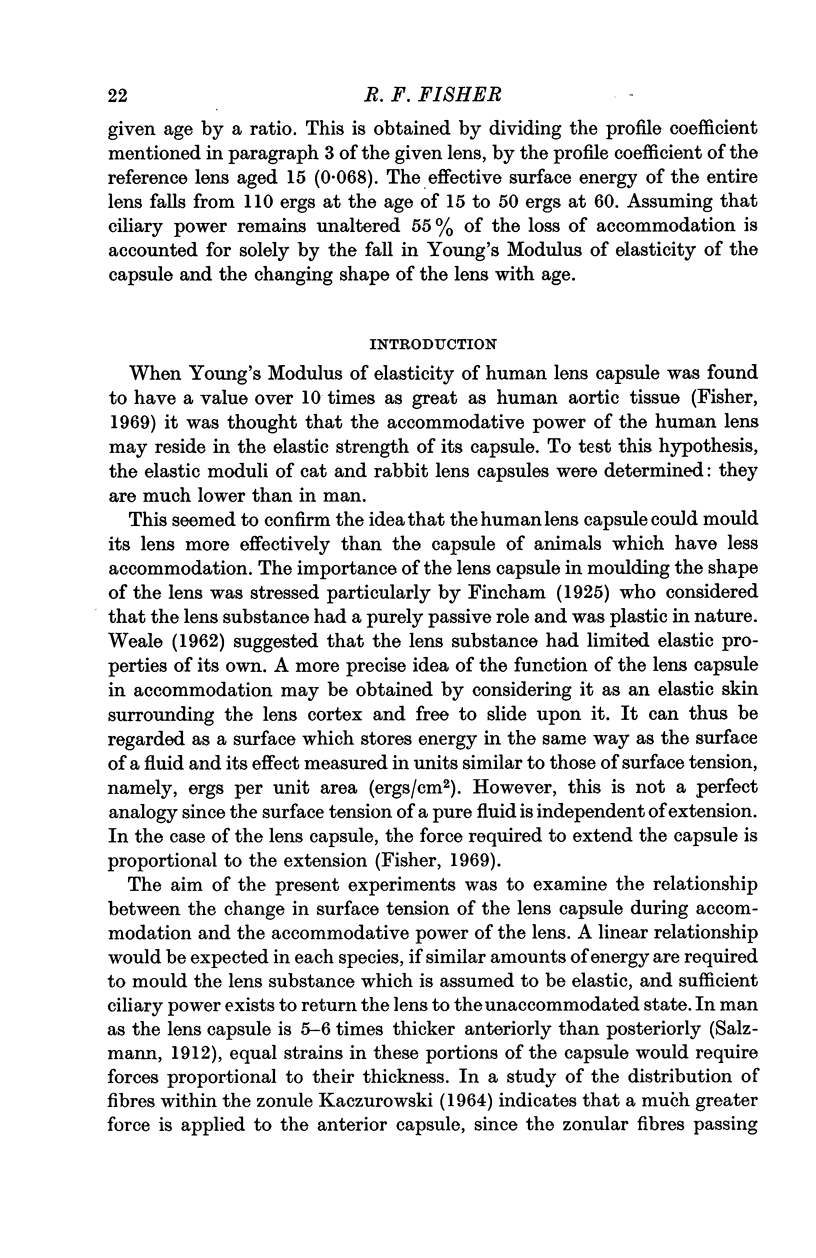

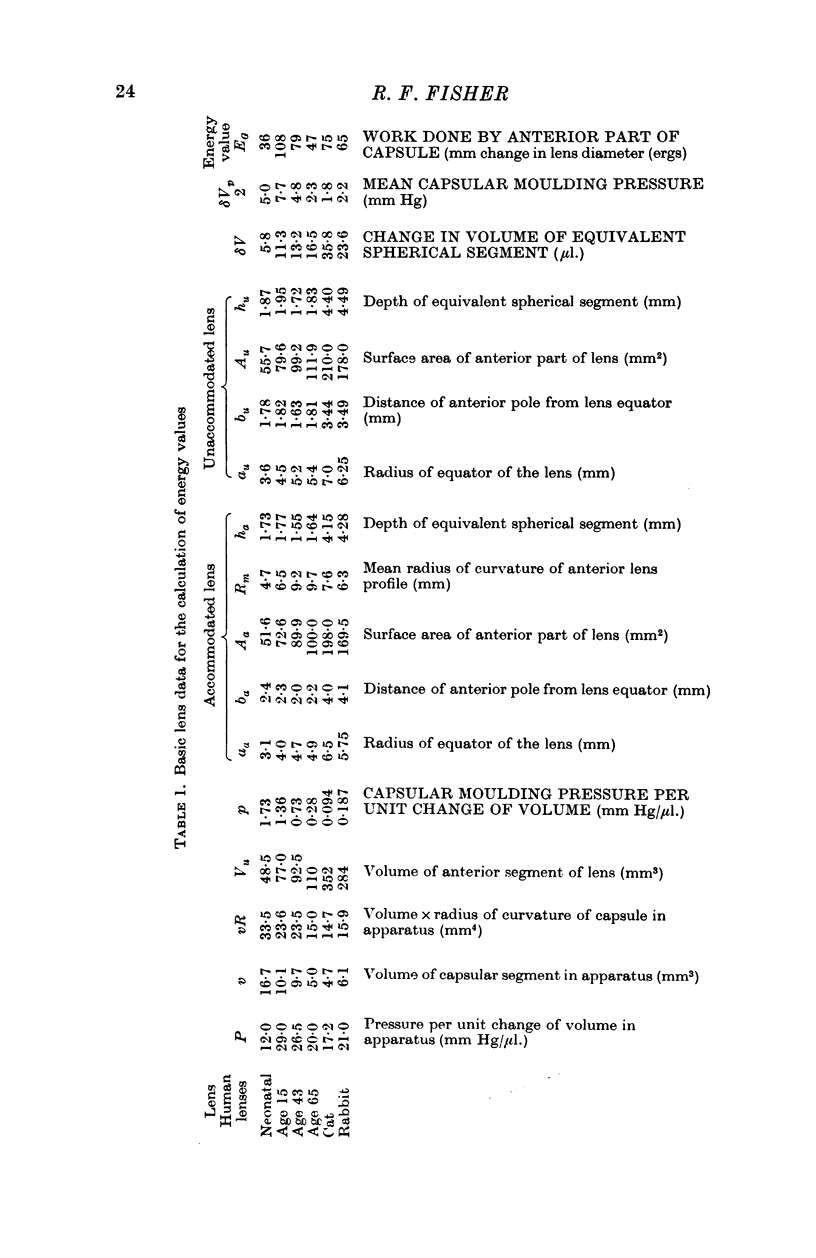




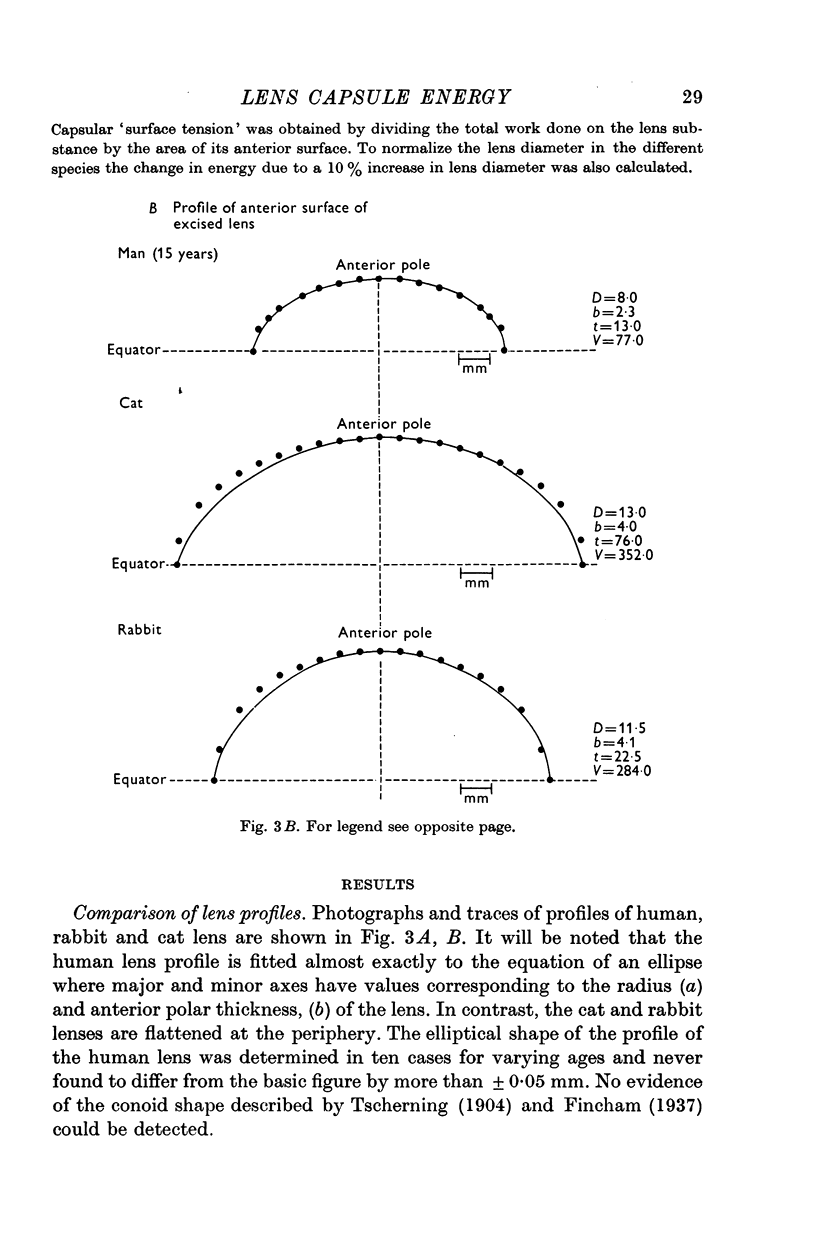
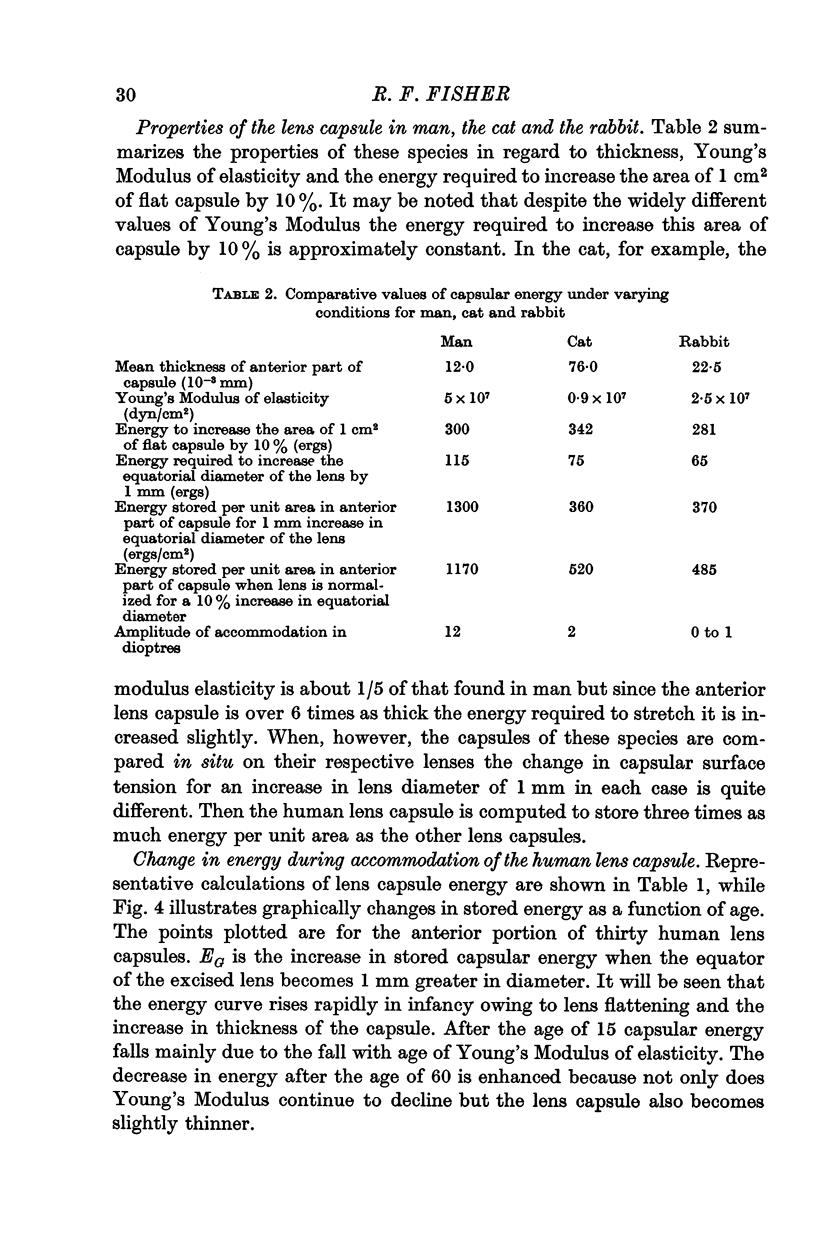
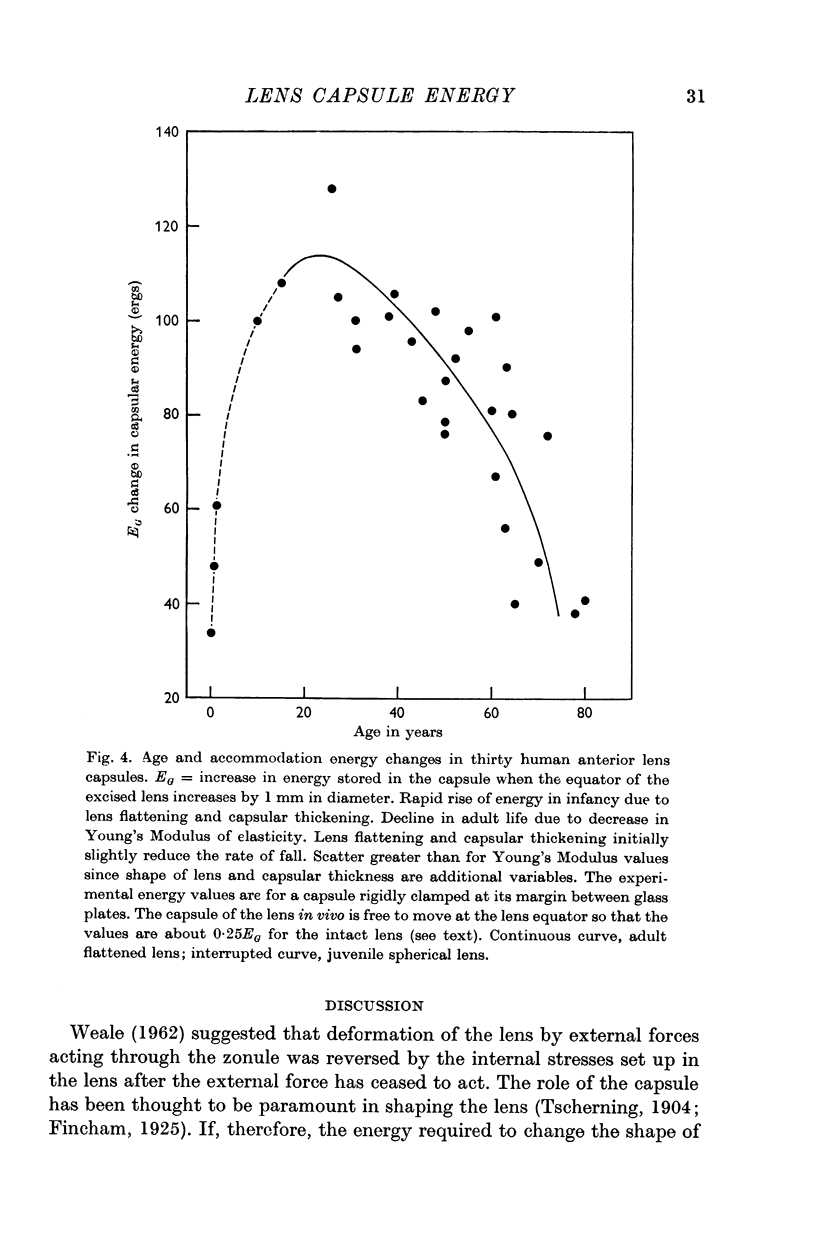
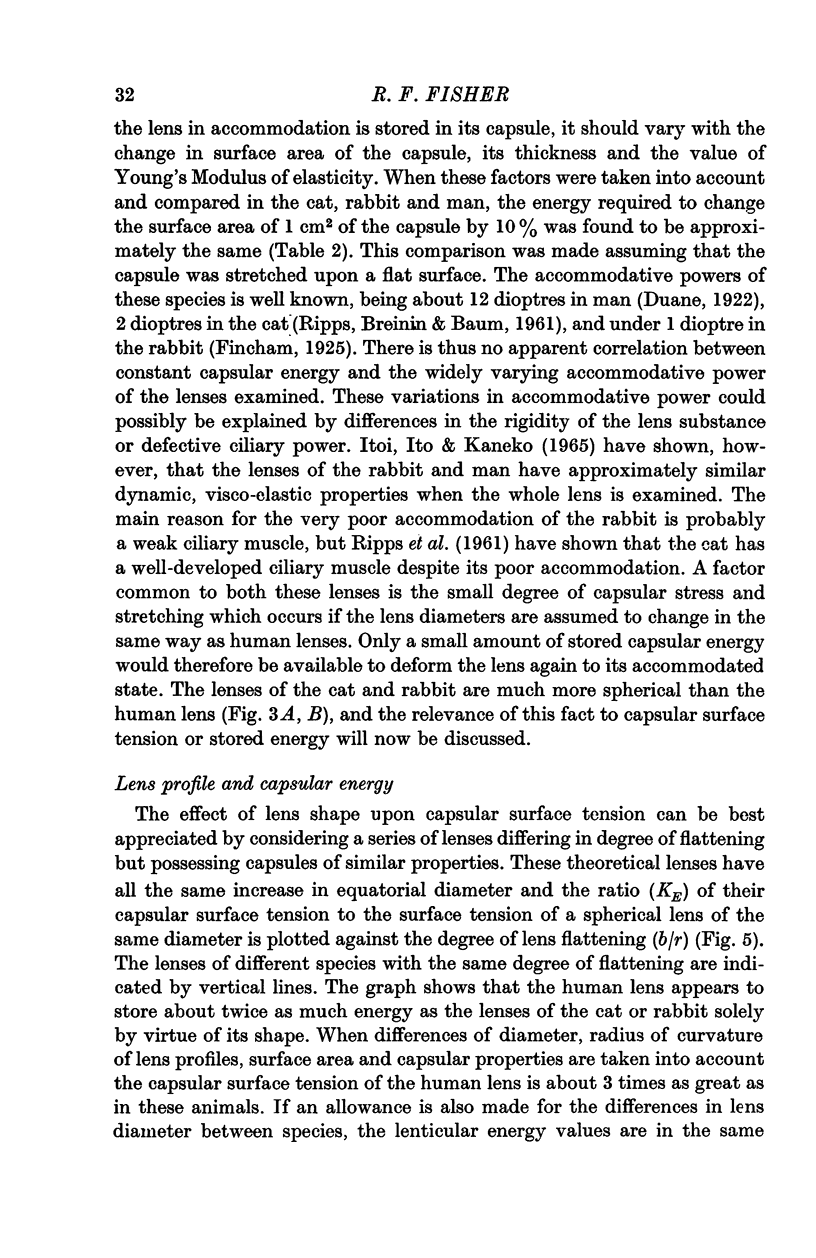
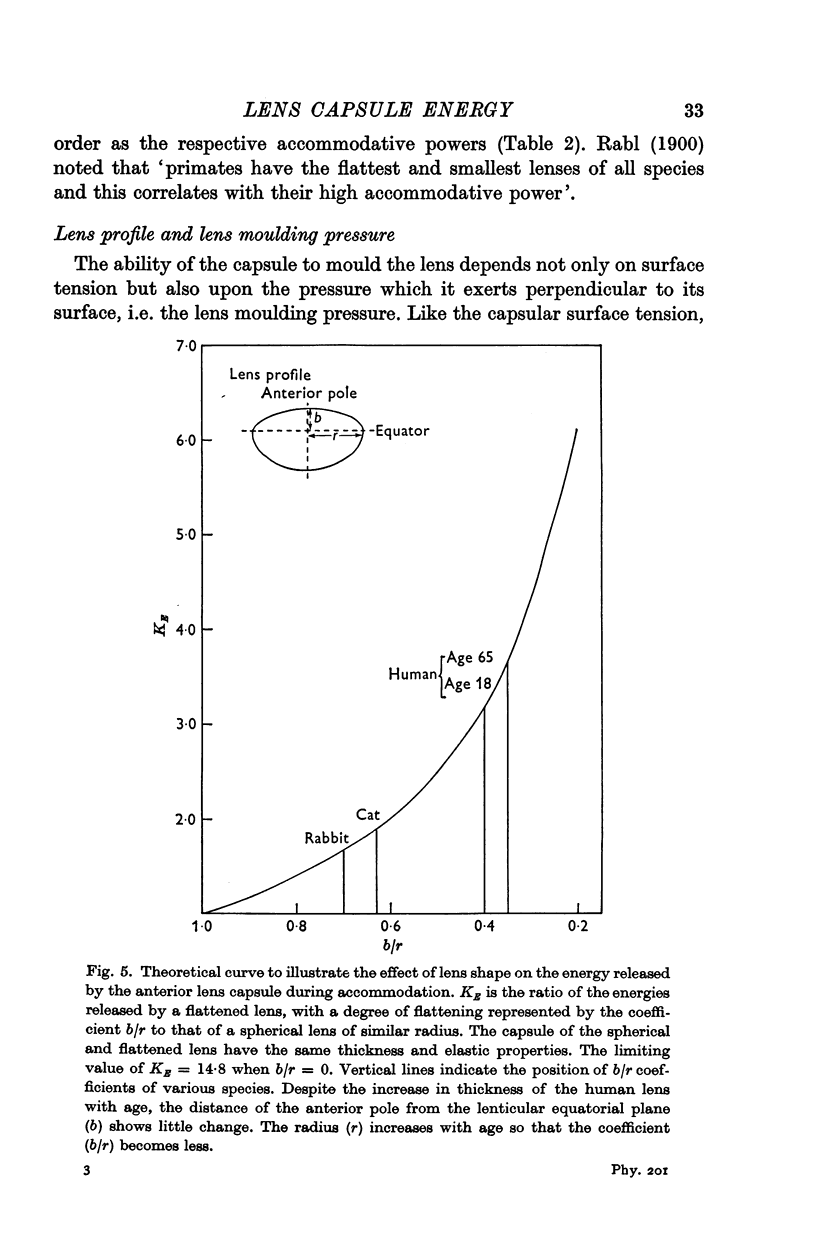
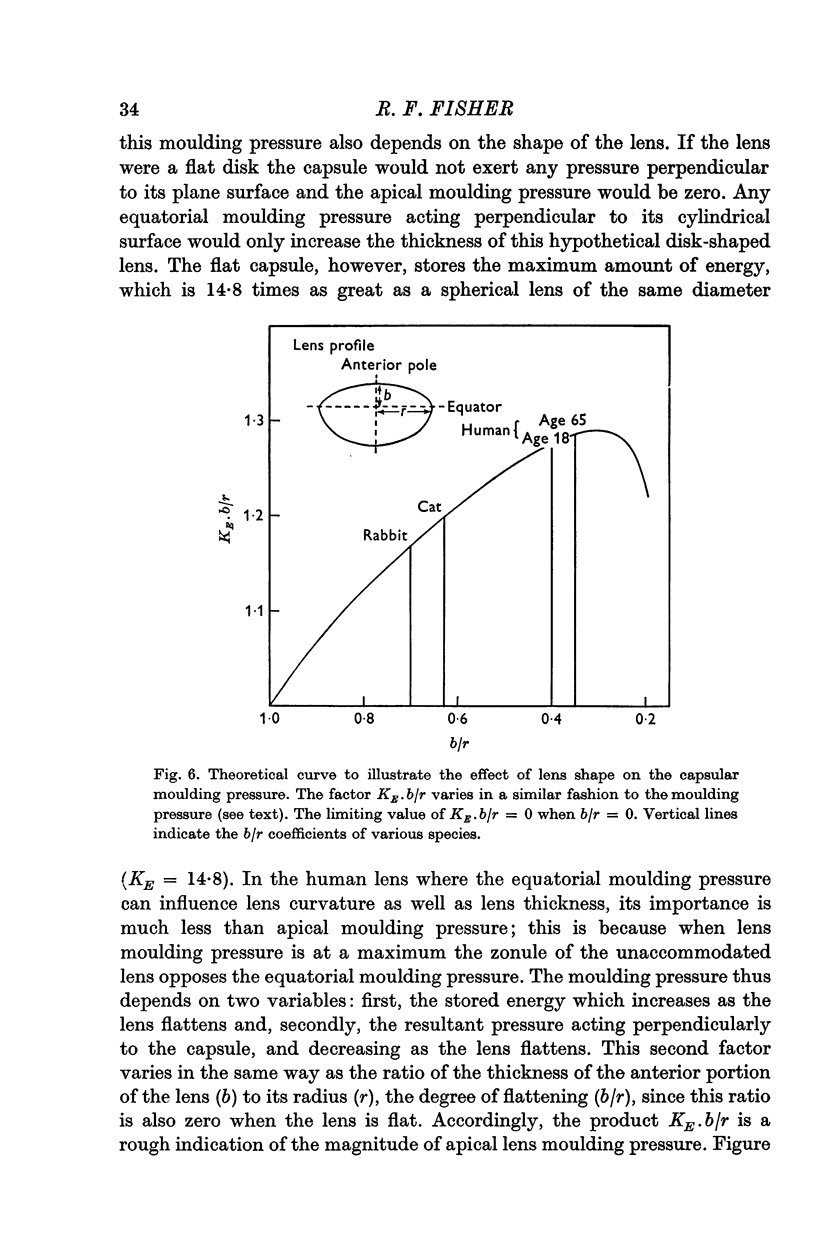

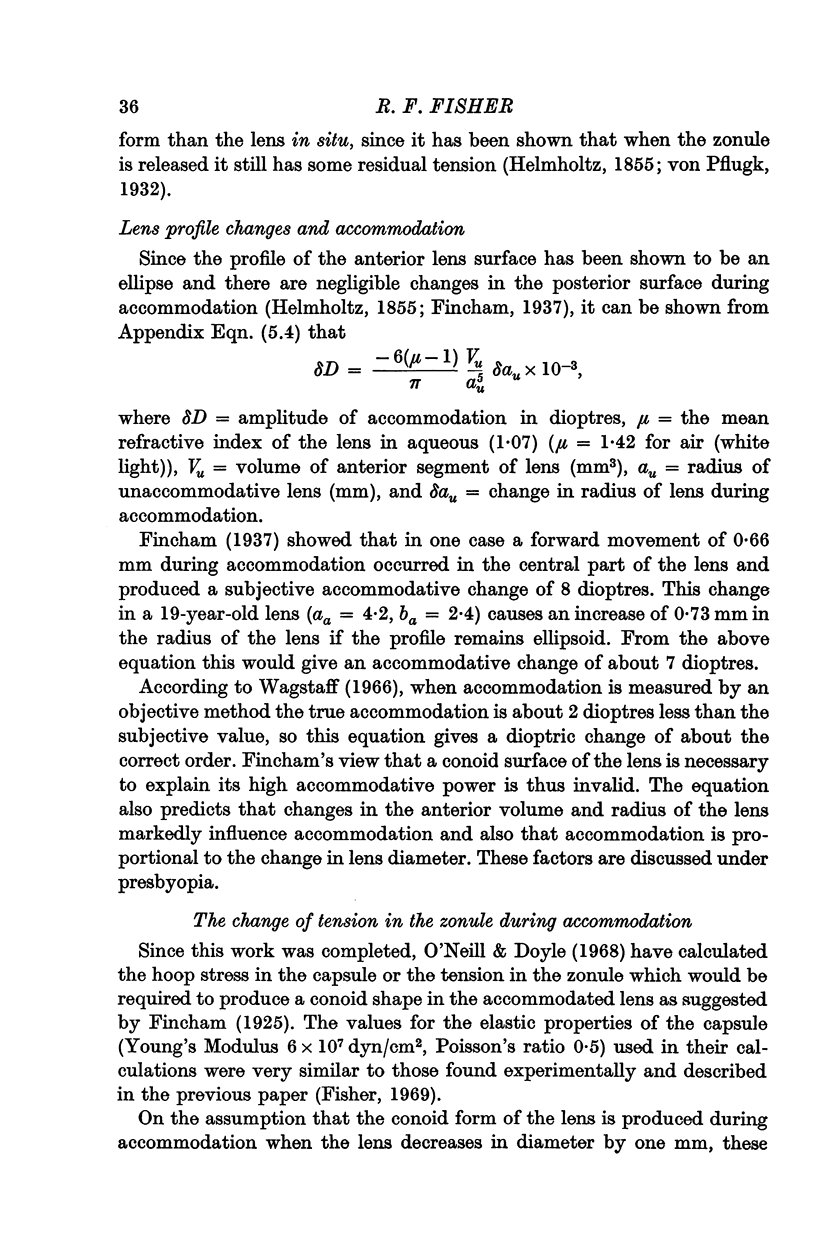
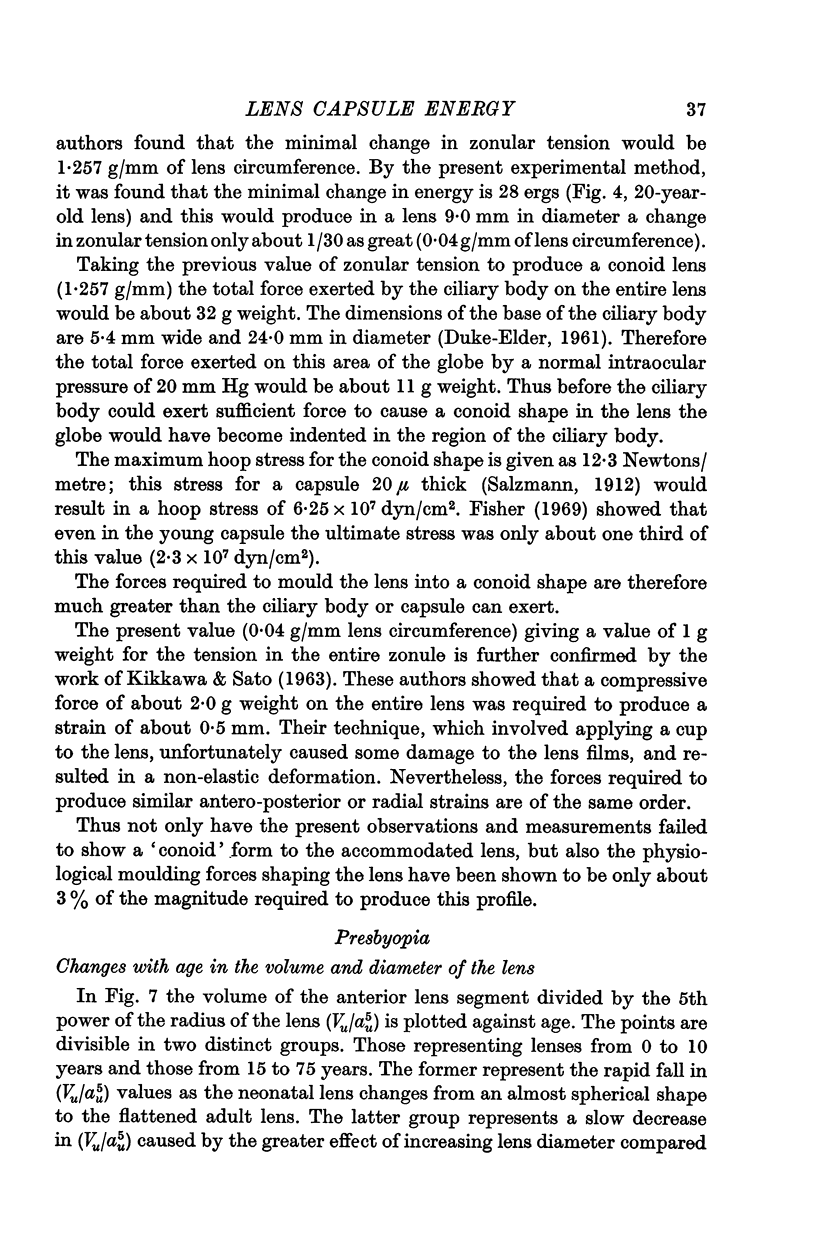
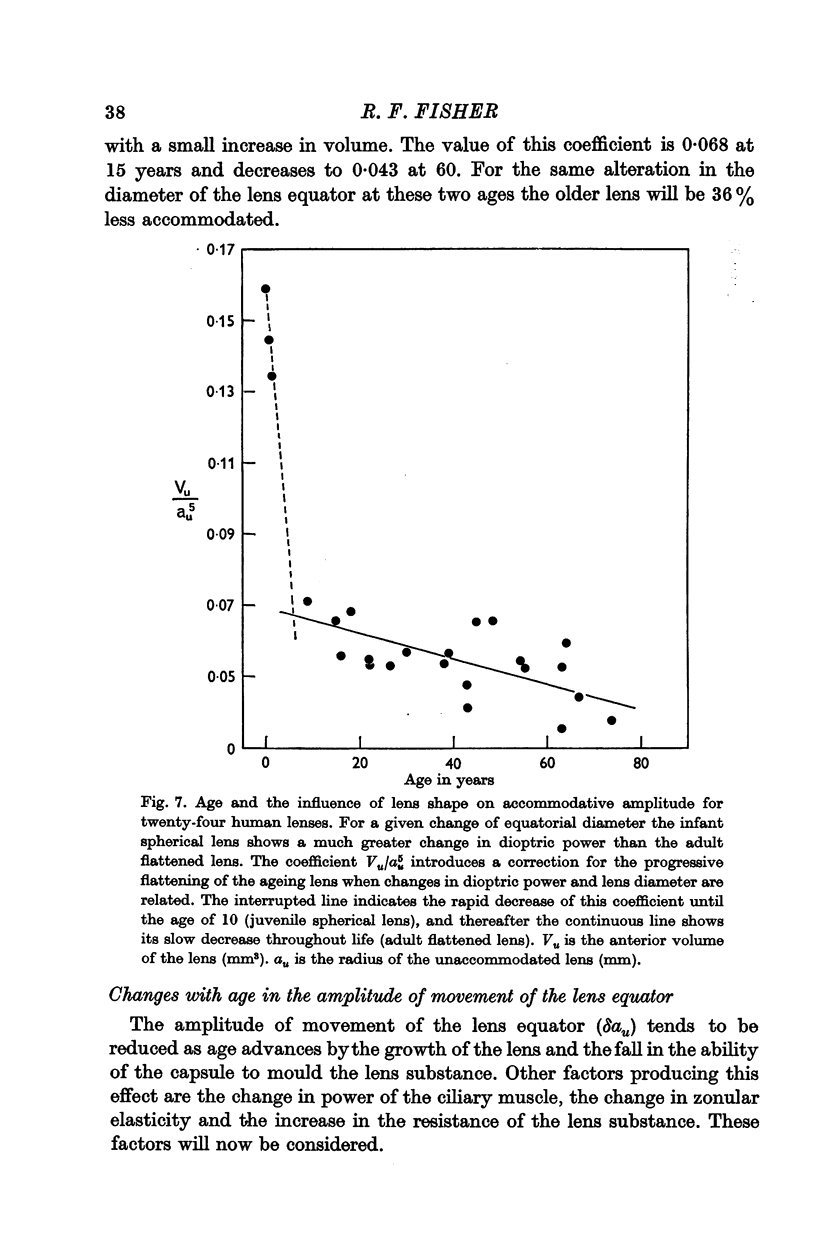
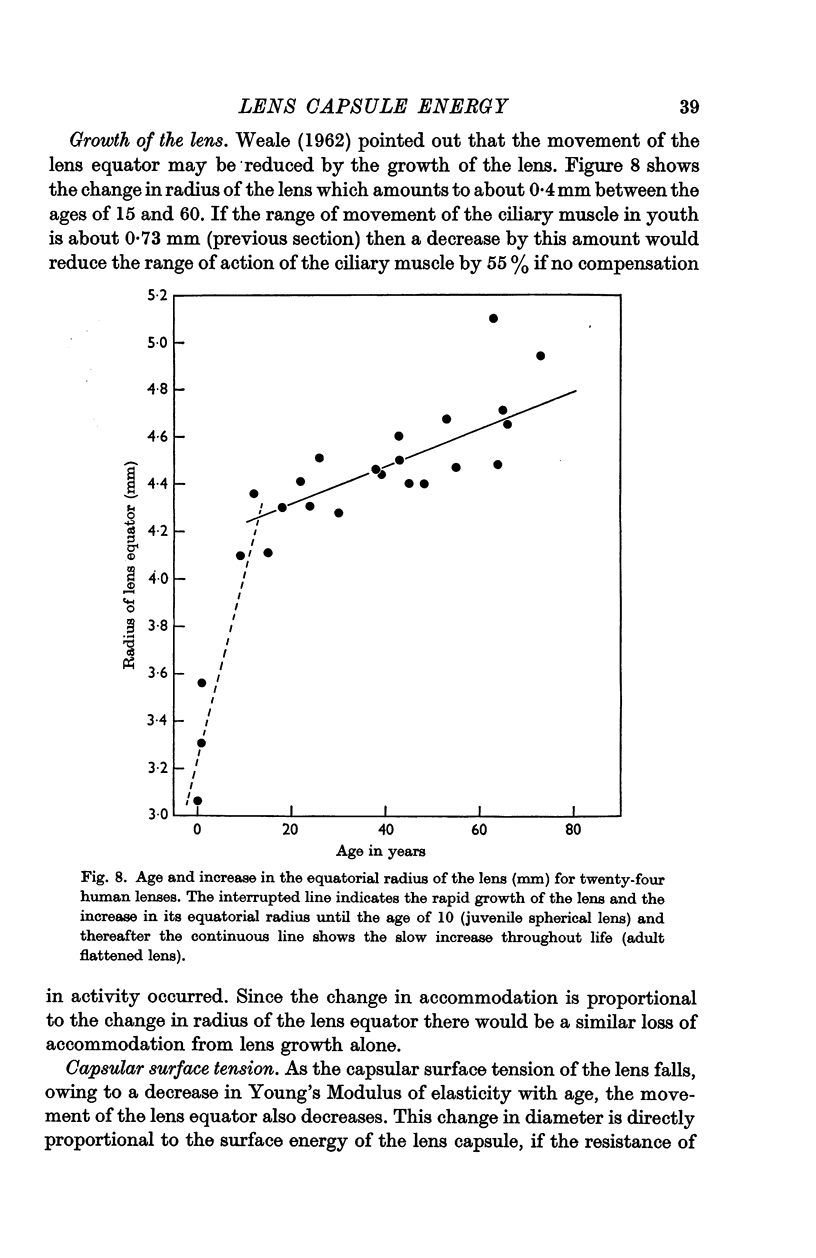

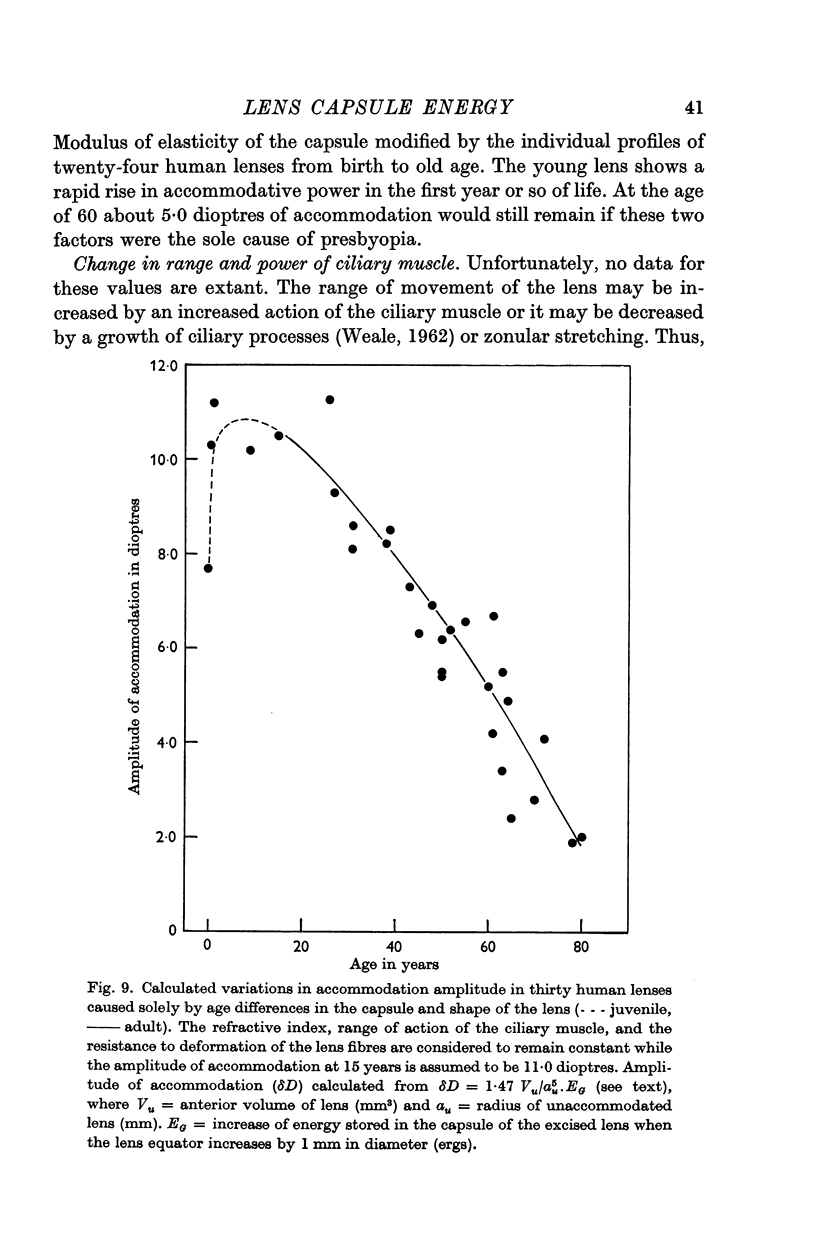
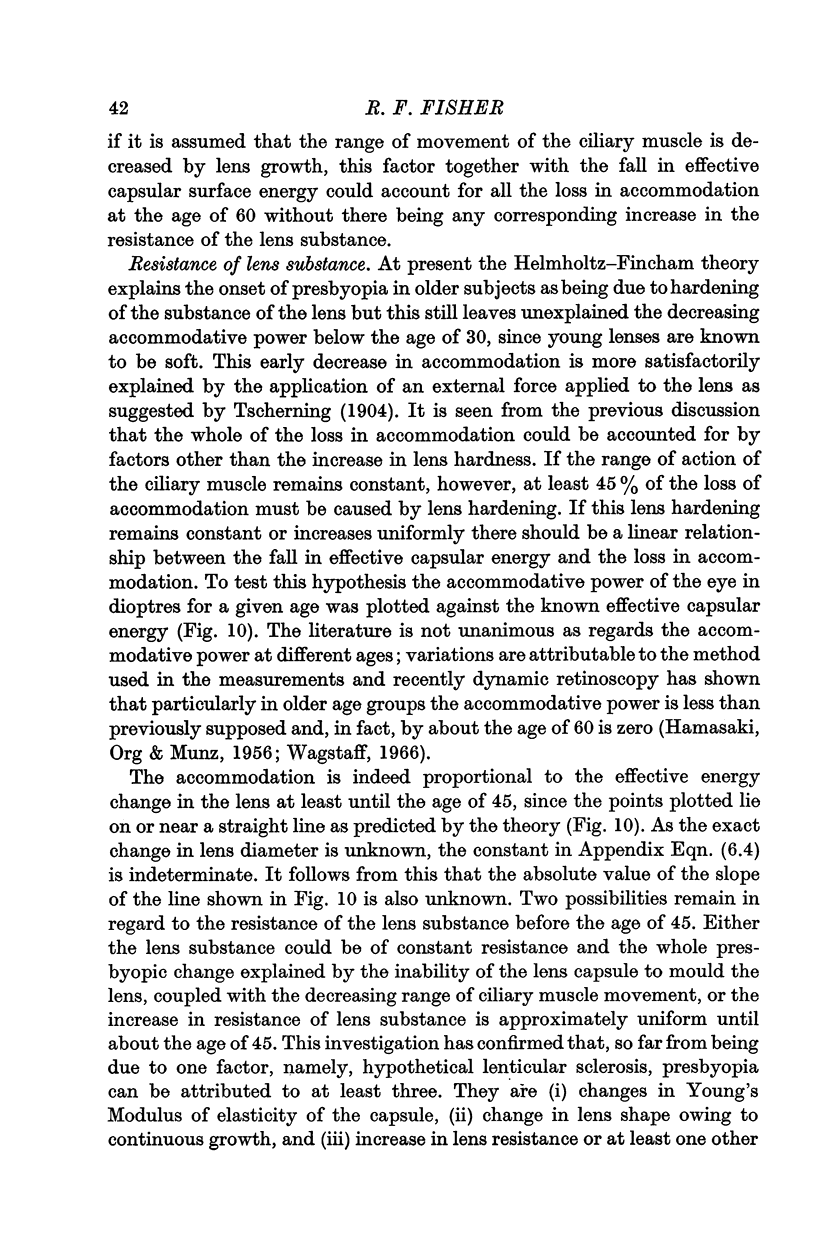




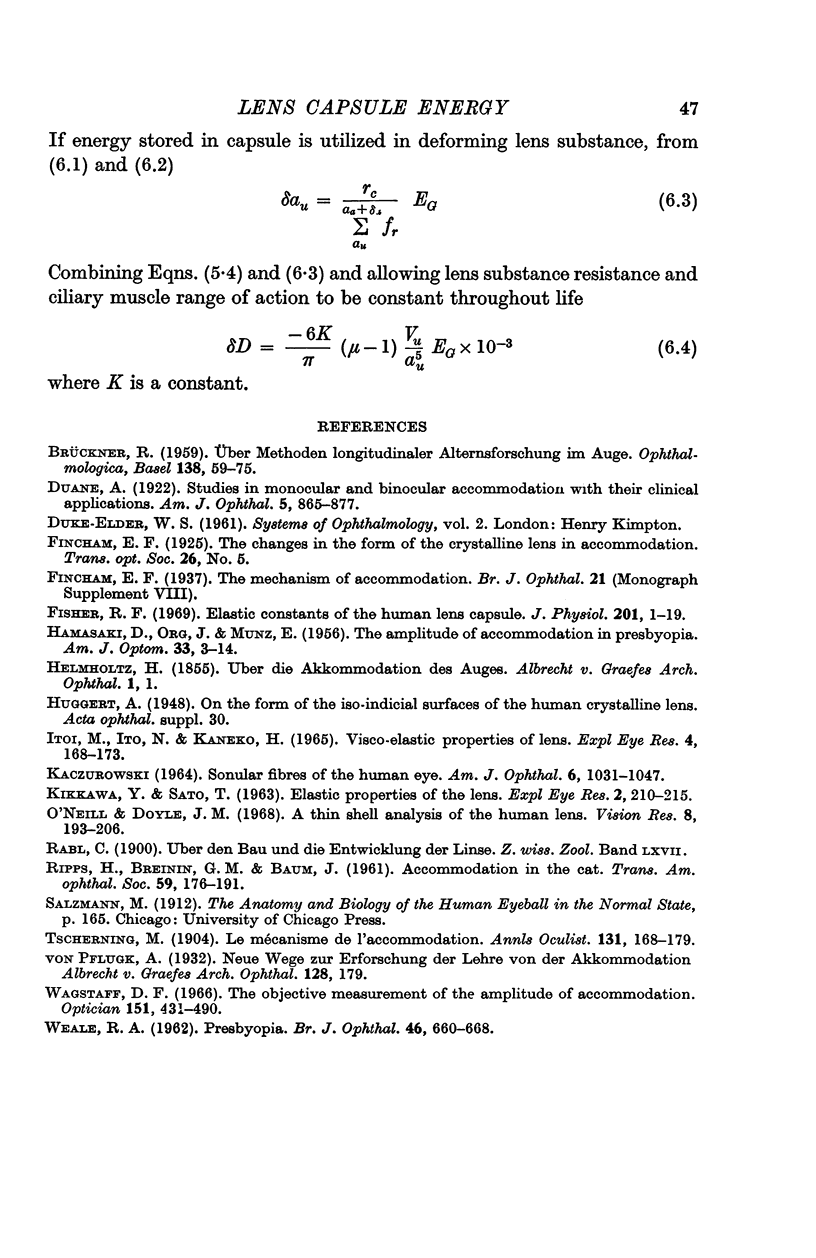
Images in this article
Selected References
These references are in PubMed. This may not be the complete list of references from this article.
- BRUCKNER R. [On methods of longitudinal aging research on the eye]. Ophthalmologica. 1959 Jul;138:59–75. doi: 10.1159/000303615. [DOI] [PubMed] [Google Scholar]
- Fisher R. F. Elastic constants of the human lens capsule. J Physiol. 1969 Mar;201(1):1–19. doi: 10.1113/jphysiol.1969.sp008739. [DOI] [PMC free article] [PubMed] [Google Scholar]
- Itoi M., Ito N., Kaneko H. Visco-elastic properties of the lens. Exp Eye Res. 1965 Sep;4(3):168–173. doi: 10.1016/s0014-4835(65)80028-8. [DOI] [PubMed] [Google Scholar]
- KIKKAWA Y., SATO T. Elastic properties of the lens. Exp Eye Res. 1963 Apr;2:210–215. doi: 10.1016/s0014-4835(63)80015-9. [DOI] [PubMed] [Google Scholar]
- O'Neill W. D., Doyle J. M. A thin shell deformation analysis of the human lens. Vision Res. 1968 Feb;8(2):193–206. doi: 10.1016/0042-6989(68)90006-0. [DOI] [PubMed] [Google Scholar]
- RIPPS H., BREININ G. M., BAUM J. L. Accommodation in the cat. Trans Am Ophthalmol Soc. 1961;59:176–193. [PMC free article] [PubMed] [Google Scholar]
- Weale R. A. PRESBYOPIA. Br J Ophthalmol. 1962 Nov;46(11):660–668. doi: 10.1136/bjo.46.11.660. [DOI] [PMC free article] [PubMed] [Google Scholar]



